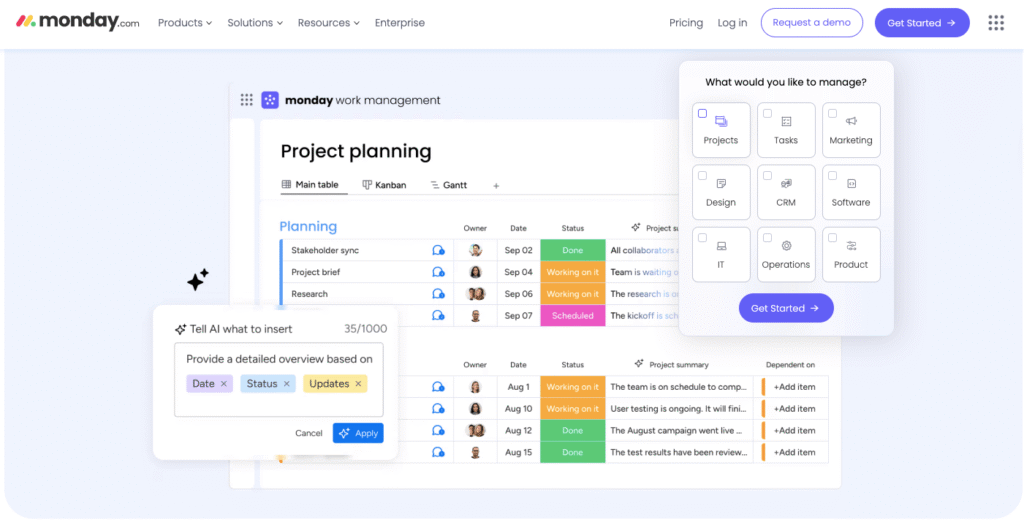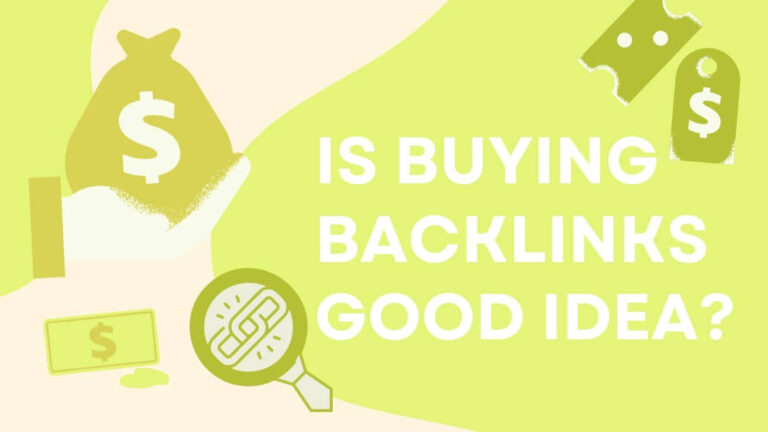In 2025, the top Notion alternatives that really matter are Monday.com and ClickUp. Each tackles Notion’s biggest pain points, from clunky setups to limited automation. Monday.com shines for teams that want workflows to run themselves, while ClickUp gives power users a Swiss Army knife of project tools without drowning them in complexity.
More users are jumping ship from Notion, especially since these platforms don’t require watching 50 YouTube tutorials just to make a simple database. They’re faster, handle teamwork without drama, and make it clear where everything lives.
Want to see how these stack up against each other? Let’s dig into what makes each one special.
Key Takeaways
- Monday.com and ClickUp are leading Notion replacements in 2025, offering automation and flexibility without the steep learning curve.
- Teams and individuals are switching because these tools are faster, simpler to set up, and easier to collaborate in than Notion.
- Privacy-focused users still have solid options like Anytype and AFFiNE, which keep data local while supporting teamwork.
List of Notion Alternatives
| Tool / Platform | Key Strengths | Collaboration Features | Customization / Views | Best For |
| Monday.com | Versatile project management, workflow automation | Shared workspace, comments, file sharing | Highly customizable, templates, automated task updates | Teams needing flexible project + task management |
| ClickUp | All-in-one work hub with AI support | Personal & team spaces, reduces clutter | Multiple views (list, board, calendar, Gantt), AI assistance for writing & tasks | Teams wanting integrated tasks, docs, and AI |
| Obsidian | Non-linear note-taking, graph-based linking | Individual-focused, light collaboration | Graph view for idea mapping | Researchers, knowledge workers, creative thinkers |
| Airtable | Combines spreadsheets + database + project views | Team-based database collaboration | Calendar, card, spreadsheet views, flexible automations | Businesses managing complex info (inventory, CRM, projects) |
| Asana | Enterprise-ready workflows, reporting | Team coordination at scale | Custom workflows, automation, integrations | Large organizations managing complex projects |
| Trello | Simple, visual task planning | Easy card-based collaboration | Drag-and-drop Kanban boards | Small teams / beginners wanting simplicity |
| Anytype | Privacy-first, local data storage | Secure collaboration with encryption | User-controlled data structure | Users who prioritize privacy (law, healthcare, personal) |
| AFFiNE | Privacy + open-source collab tools | Whiteboards, shared docs, local-first | Flexible, transparent codebase | Privacy-conscious teams needing collaboration |
| Slite | Knowledge base + document organization | Real-time team collaboration, comments | Smart search, lightweight setup | Teams building internal wikis / documentation |
| Coda | Docs that transform into workflows | Multi-user editing & comments | Blends docs, spreadsheets, apps into one | Teams wanting customizable, multifunctional docs |
| Microsoft Loop | Real-time collaboration across MS apps | Syncs with Teams, Word, Outlook | Fluid components move between apps | Teams deep in Microsoft ecosystem |
| Microsoft OneNote | Flexible note-taking, multimedia support | Shared notebooks, cross-device sync | Free-form notes, smart search (even handwriting) | Individuals & teams needing organized note capture |
What Defines a Notion Alternative?
People ask this question all the time, and honestly, the answer’s simpler than most think. A real Notion alternative needs to be that go-to digital workspace where you can dump your thoughts, keep track of projects, and actually work with other people without losing your mind. Picture your ideal desk, but make it digital and actually organized.
Core Features of Notion Alternatives
When you’re looking at replacements, here’s what matters:
- Getting stuff done: Todo lists that don’t get buried, deadlines you’ll notice, and a clear picture of who’s handling what
- Brain storage: Somewhere to stash your notes that you can actually find later
- Playing nice with others: Real-time editing that doesn’t break, comments that make sense, and notifications that don’t drive you crazy
- Making it yours: Templates that save time and ways to set things up how you want
Some tools really shine with visual organization (think fancy project boards), while others are better at connecting your random thoughts together.
How User Needs Influence Notion Alternative Choices
Everyone’s got their own thing going on:
- Team players need tools that keep everyone on the same page without endless meetings
- Solo workers want something that helps them connect the dots between ideas
- Privacy folks are looking for ways to keep their data off someone else’s computers
- Automation seekers just want the computer to handle the repetitive stuff
Big teams typically gravitate toward the hardcore project tools, while the solo crowd usually picks something that’s better at connecting thoughts and ideas.
What Metrics Evaluate Notion Alternatives?
Here’s what actually matters when picking a tool:
- Can you figure it out without a degree in rocket science?
- Will it bend to fit your weird way of working?
- Does it play well with the other apps you can’t live without?
- Who’s got their hands on your data?
- Is the AI actually helpful or just another buzzword feature?
This stuff helps sort out which tool might actually work better than Notion for your specific situation.
How Monday.com Provides Versatile Project Management and Collaboration

Remember digging through your inbox for that one important update? Yeah, Monday.com puts an end to that nightmare. They’ve built something that actually shows you what’s happening without making you hunt for it. Teams are switching over because they’re tired of staring at walls of text trying to figure out what’s going on. [1]
How Monday.com Supports Task and Workflow Automation
The real magic happens in the background:
- Tasks update themselves when they move along
- You get nudged about stuff before it’s late
- Quick-start templates that don’t waste your time
It handles the boring stuff while you focus on the work that matters.
Collaboration Benefits in Monday.com
No more “sorry, I missed that email” excuses. When everyone’s working in the same space, with comments and files right there in front of them, things just flow better. Plus, there’s this weird psychology thing, when people can see their tasks laid out clearly, they’re more likely to actually do them.
Customization Enhances Monday.com’s Usability
Ever tried forcing a square peg into a round hole? Monday.com doesn’t make you do that. Teams can set things up their way, and new folks can jump in without watching hours of training videos.
How ClickUp Integrates Task Management, Document Creation, and AI Assistance

ClickUp’s basically trying to be your whole office in one tab. They’ve taken regular task management and sprinkled in some AI that isn’t just there for show, it actually speeds things up, much like the polished blog post examples that keep workflows clear and engaging. [2]
Multi-view Options in ClickUp
Different strokes for different folks, right? ClickUp lets you pick your view:
- Lists for the spreadsheet lovers
- Kanban boards when you need that visual flow
- Calendar for deadline watchers
- Gantt charts for the project planning nerds
AI Features Improve Project and Writing Assistance
Think of the AI like a really efficient intern, it helps write clearer descriptions, summarizes those endless meeting notes, and even suggests your next move. It’s there when you need it, invisible when you don’t.
Customizing Collaboration Spaces
Everyone gets their own little corner of ClickUp to keep things from getting messy. You see what you need for your work, and the marketing team’s memes stay in their space where they belong.
How Obsidian Supports Non-linear Note-taking and Knowledge Visualization
Credits: Shu Omi
Ever tried organizing your thoughts in straight lines? Doesn’t work so well, right? That’s where Obsidian steps in, it’s built for people whose minds jump between ideas like a cat chasing laser dots. No rigid folders here, just notes that flow wherever your brain takes them.
Benefits of Non-linear Note-taking
Think of it like having string to connect any thought to another. Obsidian lets your ideas link back and forth, which means you’re not stuck forcing your brain into someone else’s organizing system.
Graph View Enhances Knowledge Exploration
The graph view’s pretty neat, it shows all your notes floating around like stars in a constellation, with lines connecting related ideas. Sure beats digging through folders trying to remember where you put stuff.
Who Benefits from Obsidian’s Knowledge Management?
If you’re the type who fills notebooks with random ideas or spends hours down research rabbit holes, you’ll probably love Obsidian. It’s perfect for people who need to connect dots between different concepts.
How Airtable Combines Database Power with Visual Project Management
Airtable’s like that friend who’s super organized but also knows how to make things look good. It mashes up spreadsheets with project tools in a way that actually makes sense.
Organizing Complex Information in Airtable
You can link stuff together in ways that’d make Excel cry. Need to track inventory while managing projects and keeping customer lists? Airtable’s got you covered.
Workflow Customizations in Airtable
Nobody’s business runs exactly the same way, so Airtable lets you bend the rules. Set up automations that match how your team actually works, not how some software developer thinks you should work.
Visual Data Representation Enhances Productivity
Sometimes you need to see things laid out on cards, other times you want a calendar view. Airtable lets you flip between views without losing any data.
How Asana and Trello Facilitate Task and Project Management
These two have been around the block a few times, and there’s a reason they’re still standing. They make task management feel less like pulling teeth, especially compared with some of the top task management software for agencies in 2025 that set the bar for efficiency.
Features Making Asana Suitable for Enterprise Use
Big companies love Asana because it handles the complicated stuff, detailed reports, fancy workflows, and keeping large teams from stepping on each other’s toes.
Trello’s Simplified Visual Project Planning
Trello’s basically digital sticky notes that anyone can figure out. Drag a card here, drop it there, done. Perfect for teams who don’t want to spend days learning new software.
Automation and Integration Improve Efficiency
Both tools play nice with other apps and can handle repetitive tasks on their own. No more copying and pasting between windows all day long.
How Privacy-Focused Alternatives Like Anytype and AFFiNE Empower User Control
Not everyone’s comfortable with their data floating around in someone else’s cloud. That’s where Anytype and AFFiNE come in, they’re built for folks who want to know exactly where their stuff lives.
Privacy Features in Anytype
Your data stays on your computer with Anytype, simple as that. When you need to share, it uses some pretty clever tech to keep things private while still letting you work with others.
AFFiNE Supports Privacy and Collaboration
Think of AFFiNE as the security-conscious cousin who also knows how to throw a party. You can draw on whiteboards and work together, but the code’s open for anyone to check, and your data stays where you put it.
Who Benefits from Privacy-first Alternatives?
These tools are perfect for anyone who’s ever lost sleep wondering where their company data ends up, think lawyers, healthcare folks, or just people who like keeping their business their business.
How Wiki-Building and Knowledge Management Tools Like Slite and Coda Enhance Team Productivity
Ever tried finding that one document everybody needs but nobody can locate? Slite and Coda fix that headache by making team knowledge bases that actually make sense, similar to the best internal documentation tools for teams in 2025 found across the market.
Slite Streamlines Document Organization
Finding stuff just became a whole lot easier with Slite’s search function. Their engineers probably spent countless hours fine-tuning it, and it shows – type in a keyword or two and the results pop up instantly.
Gone are the days of clicking through twenty different folders just to find that one meeting note from last month. The system’s pretty good at picking up related terms too, which means you don’t need to remember exact file names anymore.
Workflow Customizations in Coda
What’s really cool about Coda is how it shape-shifts to match whatever you’re doing. One document might start off as meeting minutes, then suddenly you’re building spreadsheet formulas right there in the same space, and before you know it you’ve got a full-blown project management setup going.
It’s kind of like having a bunch of different apps merged into one, but without all the switching back and forth.
Balanced Usability and Collaboration
These tools hit that sweet spot between being simple enough for everyone to use and powerful enough to get real work done. The learning curve isn’t too steep – you won’t need to spend hours watching tutorials just to figure out the basics.
But when it comes to working together, that’s where they really shine. Multiple people can jump in, edit stuff, leave comments, and nothing breaks. Pretty impressive, considering how much is happening under the hood.
How Microsoft Loop and OneNote Integrate into the Microsoft Ecosystem
If you’re already living in Microsoft’s world, Loop and OneNote just make sense, they’re like the missing pieces of the puzzle.
Collaborative Features of Microsoft Loop
Microsoft Loop’s taken that old headache of switching between apps and turned it into something that actually makes sense. Picture this: someone starts brainstorming in Teams chat, another person grabs that content and expands it in Word, then shoots it off through Outlook – and nobody’s copying and pasting like crazy.
The whole thing syncs up in real-time (most of the time, anyway), which means everyone’s looking at the same version. There’s something weirdly satisfying about watching your teammate’s cursor move across the screen while they’re editing from who knows where.
OneNote Enhances Note-taking
OneNote’s been around forever, and there’s a good reason for that. It’s like that kitchen drawer where you toss everything important – except it’s organized and you can actually find stuff.
Snap a picture of a whiteboard? Sure. Record a meeting? Go ahead. Scribble down some half-baked ideas at 3 AM? Perfect. The search function’s pretty smart too, it’ll dig through your handwritten notes (even the messy ones) and pull up exactly what you need. Plus, it works offline which is a lifesaver when the wifi decides to act up.
Complementary Tools in Productivity Suites
There’s something to be said for tools that just know how to play nice together. Loop and OneNote fit into the Microsoft ecosystem like they were born there – because, well, they were. You don’t have to use them together, but it’s kind of like having a full set of matching luggage instead of a bunch of random bags.
Everything just fits, the buttons are where you expect them to be, and your stuff moves between them without throwing a fit. For teams already using Microsoft’s other tools, it’s practically a no-brainer.
Practical Advice from Create & Grow
After months of testing these tools with real teams, here’s the bottom line: pick what matches your style. If you’re all about visual task management, Monday.com or ClickUp’s your speed. Love connecting ideas? Obsidian might blow your mind. Worried about privacy? Check out Anytype or AFFiNE.
Sure, no tool’s perfect, but that’s not the point. Try a couple with actual work, not just demo projects. See which one feels natural, saves you time, and plays nice with your other apps. Sometimes the best fit isn’t the most popular choice, and that’s okay.
References
- https://www.geeksforgeeks.org/software-engineering/what-is-monday-project-management-software/
- https://techifysolutions.com/blog/enhance-project-management-with-ai/
Related Articles
- https://createandgrow.com/best-internal-documentation-tools-for-teams-in-2025/
- https://createandgrow.com/blog-post-examples/
- https://createandgrow.com/top-9-task-management-software-for-agencies-in-2025/
Frequently Asked Questions





